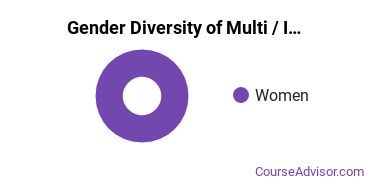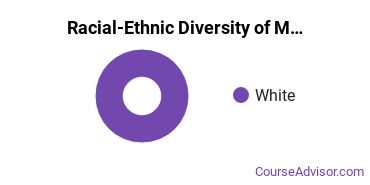Multi / Interdisciplinary Studies at SUNY College of Environmental Science and Forestry
If you plan to study multi / interdisciplinary studies, take a look at what SUNY College of Environmental Science and Forestry has to offer and decide if the program is a good match for you. Get started with the following essential facts.ESF is located in Syracuse, New York and approximately 2,127 students attend the school each year.
Want to know more about the career opportunities in this field? Check out the Careers in Multi / Interdisciplinary Studies section at the bottom of this page.
ESF Multi / Interdisciplinary Studies Degrees Available
- Bachelor’s Degree in Multi / Interdisciplinary Studies
Online Classes Are Available at ESF
Online courses are a good option for students who need a more flexible schedule that allows them to pursue an education when and where they want. Whether you're going to school part-time or full-time, you may find distance education the right choice for you.
ESF does offer online education options in multi / interdisciplinary studies for the following degree levels for those interested in distance learning:
- Bachelor’s Degree
ESF Multi / Interdisciplinary Studies Rankings
The multi / interdisciplinary studies major at ESF is not ranked on College Factual’s Best Colleges and Universities for Multi / Interdisciplinary Studies. This could be for a number of reasons, such as not having enough data on the major or school to make an accurate assessment of its quality.
Multi / Interdisciplinary Studies Student Demographics at ESF
Take a look at the following statistics related to the make-up of the multi / interdisciplinary studies majors at SUNY College of Environmental Science and Forestry.
ESF Multi / Interdisciplinary Studies Bachelor’s Program

About 90% of those who receive a bachelor's degree in multi / interdisciplinary studies at ESF are white. This is above average for this degree on the nationwide level.
The following table and chart show the race/ethnicity for students who recently graduated from SUNY College of Environmental Science and Forestry with a bachelor's in multi / interdisciplinary studies.

| Race/Ethnicity | Number of Students |
|---|---|
| Asian | 0 |
| Black or African American | 1 |
| Hispanic or Latino | 0 |
| White | 9 |
| International Students | 0 |
| Other Races/Ethnicities | 0 |
Concentrations Within Multi / Interdisciplinary Studies
If you plan to be a multi / interdisciplinary studies major, you may want to focus your studies on one of the following concentrations. The completion numbers here include all graduates who receive any type of degree in this field from SUNY College of Environmental Science and Forestry. Some of these focus areas may not be available for your degree level.
| Concentration | Annual Degrees Awarded |
|---|---|
| Sustainability Science | 1 |
Related Majors
Careers That Multi / Interdisciplinary Studies Grads May Go Into
A degree in multi / interdisciplinary studies can lead to the following careers. Since job numbers and average salaries can vary by geographic location, we have only included the numbers for NY, the home state for SUNY College of Environmental Science and Forestry.
| Occupation | Jobs in NY | Average Salary in NY |
|---|---|---|
| Accountants and Auditors | 110,780 | $96,300 |
| Community and Social Service Specialists | 15,510 | $56,110 |
| Medical Scientists | 9,500 | $95,170 |
| Labor Relations Specialists | 7,890 | $85,870 |
| Professors | 6,440 | $112,000 |
References
*The racial-ethnic minorities count is calculated by taking the total number of students and subtracting white students, international students, and students whose race/ethnicity was unknown. This number is then divided by the total number of students at the school to obtain the racial-ethnic minorities percentage.
- College Factual
- National Center for Education Statistics
- O*NET Online
- Image Credit: By DASonnenfeld under License
More about our data sources and methodologies.
